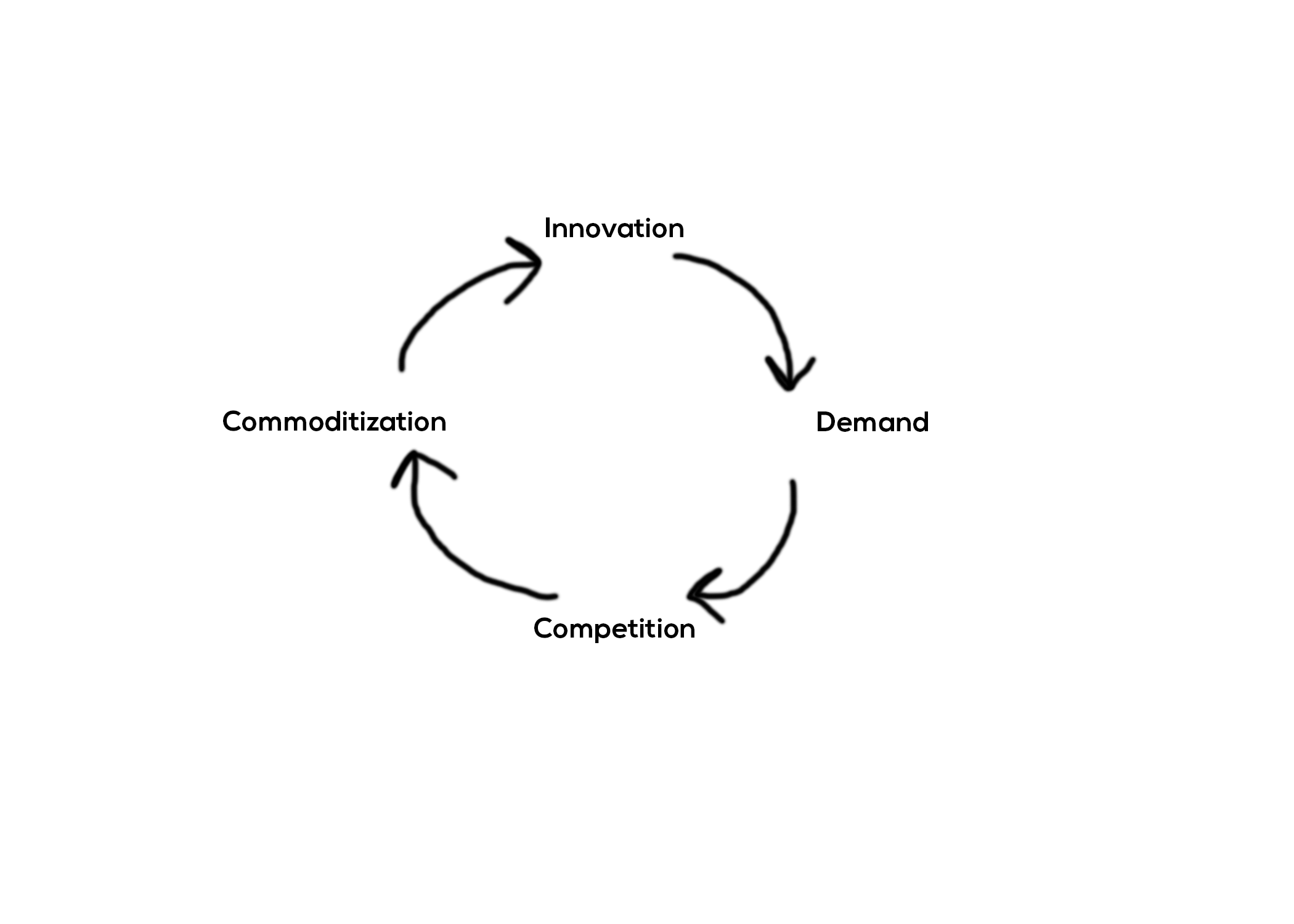In Defense of Private Equity
Jason Zweig of the Wall Street Journal is a finance journalism legend. That said, WeWork’s IPO disaster has him (and a lot of his peers) all in a tizzy about private markets. The narrative throughout Twitter (FinTwit - I’m looking at you), the podcast universe, and now journalistic media is that WeWork is an example, or better yet a symptom, of fast and loose investing practices in the private markets.
My opinion of this narrative is split: (1) the media is right to point out that private markets are riskier than public markets and to question whether the returns are sufficient to compensate for this risk. (2) The media is wrong that there is a systemic problem in private markets related to irresponsibility or whimsical behavior on the part of investors.
Are the Returns Enough to Cover the Risk?
In How We Should Bust an Investing Myth, Zweig rightly submits that private market investors are more prone to error than public market investors. This should be obvious to anyone: publicly traded companies are generally large with robust finance and accounting teams that generate accurate financial data. Market participants generally have access to the same information. Furthermore, the transaction process is transparent, meaning market participants can take into account a wide array of value opinions in real-time.
The private markets possess features that stand in stark contrast: financial data is unreliable, finance departments are often undermanned (or incompetent), true indicators of performance may not obviously stand out, and the market’s opinion of value is opaque and constrained to a point in time. Furthermore, some private companies are so unique that analogies from other businesses do not apply, meaning an investor also must be comfortable with ambiguity to understand the quality of an opportunity. Also, private investments are illiquid and achieving liquidity is really hard.
Thus when Zweig says, “[private investors] may be more prone to error than public markets are - not less,” he should be nominated for the Understatement of the Year Award.
But what he means by “error” is the crux of the discussion. By error, does he mean “risk?” By risk, does he mean “probability of permanent losses?” Are we talking about permanent losses in a single investment or a portfolio? In the asset management business, it’s the portfolio that ultimately matters. While a private asset manager is more “prone to error” in individual investments, she is also prone to higher returns per investment. According to Cambridge Associates, 25 years of private equity returns have beaten the S&P 500 by 7% to 50% depending upon the time window. Keep in mind, these returns are net to LPs, meaning they are net of fees. The S&P 500 index is indeed an index, so unless you are accessing these returns via ETF, these returns are gross of fees. Private equity looks pretty good in this light.
Same with venture capital, although with even more variability, the asset class generally outperforms the S&P as well:
The question is whether the risks private investors take are adequately compensated for by the returns. I would argue that 25 years of outperformance are ends to justify the means, but the gap has slightly narrowed in recent years after the historic run-up in returns seen by the S&P 500 and increased competition among asset managers in private markets.
I am obliged to remind anyone who is zealous for the argument that the public markets are narrowing the gap that pretty much everyone thinks the S&P 500 is somewhere near a top and unlikely to replicate the prior 10 year run of 16% per annum.
Moreover, it would be tough to argue that private equity deserves a 25% risk premium (approx. equal to the 25-year gap) and that venture capital is more than 3x as risky as private equity (approx. equal to VC’s returns in excess of public markets). It’s not a slam dunk argument either way, which seems to validate the private asset classes. I’ll leave the nuances to the quants and theorists, but in practice private asset managers must be doing something right.
Naughty, Naive, Irresponsible Private Investors
Zweig goes on to make a few misguided (read: infuriating) arguments about irresponsibility in the asset class:
“Yet in these clubby circles—non-traded real estate, infrastructure portfolios of airports and highways, venture capital that nurtures startup firms and private-equity funds that buy up entire companies—relatively few investors determine what investments are worth, often based on similar viewpoints. Short selling, or betting that prices will fall, doesn’t exist… So pricing is in the hands of the optimists.”
Ben Graham once said “in the short run the market is a voting machine and in the long run it is a weighing machine.” This statement applies to all markets. Sure, myriad investors “vote” in public markets, but in the long-run, crashes and bull runs occur because good businesses are ultimately weighed (just look at Apple or Facebook’s price history).
The notion that private markets represent the law of small numbers and group think simply because it excludes pessimists is ridiculous. First of all, for any given middle-market control private equity deal, it is not uncommon for an investment banker to solicit 400 buyers. That’s a market. Second of all, the existence of short selling in public markets has nothing to do with price efficiency. In every private market deal, there is a willing buyer and seller. In public short sales, there are willing buyers. For every public long buy, there is a willing seller. Pricing in a short sale is as much in the hands of the optimist as the long sale. Therefore, pricing is as much in the hands of the optimist in the public market as the private.
The optimist’s risk isn’t in the fact that he paid more than anyone else. It’s in the weighing. The 25 years of returns in the Cambridge Associates charts above are a compelling scale.
“Or perhaps the brilliance of the private market is overstated. Consider a recent survey of nearly 900 venture capitalists.
Asked whether they “often make a gut decision to invest” in a fledgling company rather than relying on analysis, 44% of venture-fund executives said yes.
Which financial metrics do they use to analyze investments? “None,” admitted 9% of respondents. Only 11% quantitatively analyze past investment performance. A similar survey of private-equity executives found that they “do not frequently use” the methods that are standard among public investors for discounting the future cash their holdings might generate.”
Bullshit. You know why VCs and PE investors “do not frequently use” the methods that are standard among public investors? Public investing methods are neither rigorous nor granular enough.
It is not well known that private equity firms actually have an advantage over public investors before they make investments. They have often have protracted exclusivity periods with unlimited access to management and deep access to all of the company’s private financial data. Public investors have periodic calls with management teams, audited financials, and publicly drafted MD&A. For our last investment, we literally spent months rebuilding the company’s business model by invoice, purchase order, and hourly headcount. We understood every single SKU by customer by month, the explanations behind the fluctuations, and the detailed go-forward outlook. We understood the theoretical and practical capacity of every single individual piece of equipment, what it would cost to buy another, and how much should be spent on maintenance. Exercises like this are not available to public investors, so PE investors understand the underlying business drivers better than public investors.
VCs on the other hand, are investing in companies that in many cases don’t even have customers. They have no choice but to use their guts. There is no historical data. They do the work to understand the unit economics of the business. They ask questions like: How much does it cost to acquire a customer? What’s the lifetime value? What are our margins? How much SG&A spend will we have at scale? If all that checks out, it’s a gut check over whether you believe the CEO and management can execute. Sure, you can build a discounted cash flow as a sanity check, but it’s a secondary or tertiary pertinece-level analysis. It’s a question of whether the return is large enough to get a 10x return, not whether you are off on your pre-money seed round valuation by 10%.
Conclusion: What’s Actually Wrong with PE?
As someone who is (sort of, not really) in PE, I must admit I have had a “no one picks on my brother… except me” kind of reaction to the news lately. That said, there are things wrong with the space. Zweig and Elizabeth Warren seem to have no idea what they are, but they clearly sense something amiss.
First, the private equity business has devolved into a fundraising and capital deployment machine. The business model is as follows:
10 Year Fund Life
2% Annual Management Fee (I.e.: If you raise $500 million, you get $10 million per year in annual revenue for 10 years)
Fees paid by portfolio companies for governance
Promote (I.e.: Beyond a certain return to investors, the PE firm shares in the upside)
Theoretically, the vast majority of PE wealth is generated by the promote, so everyone is incented to grow companies. Unfortunately, however, the incentives are more complex.
If I raise $500 million, I am incented to put the money to work quickly and tell the marketplace that it’s going great. Usually, the investment period is in the first 3-6 years. Let’s say I am successful in deploying 80% in the first 3 years: I can then “mark to market” my current investments and raise another $500 million fund. And so on. Managers will accept a marginally lower return if they can keep raising funds, deploying them, and thus enriching themselves on management fees.
Anecdotally, we are seeing larger buyout funds stretch for deals in their wheelhouse. We were just outbid by 22% by a midmarket fund on a company with $6 million of EBITDA (not unheard of, but still somewhat small for a midmarket PE fund). This was a business we had a very unique angle on and it is hard to imagine someone having a reason to pay more than we did. I wonder if their primary incentive is no longer to generate top-quartile returns, but rather stay in the game long enough to get deals done and raise another fund. I hope I’m wrong. Otherwise, in the long run they’ll make Jason Zweig’s article look more insightful that it was.





